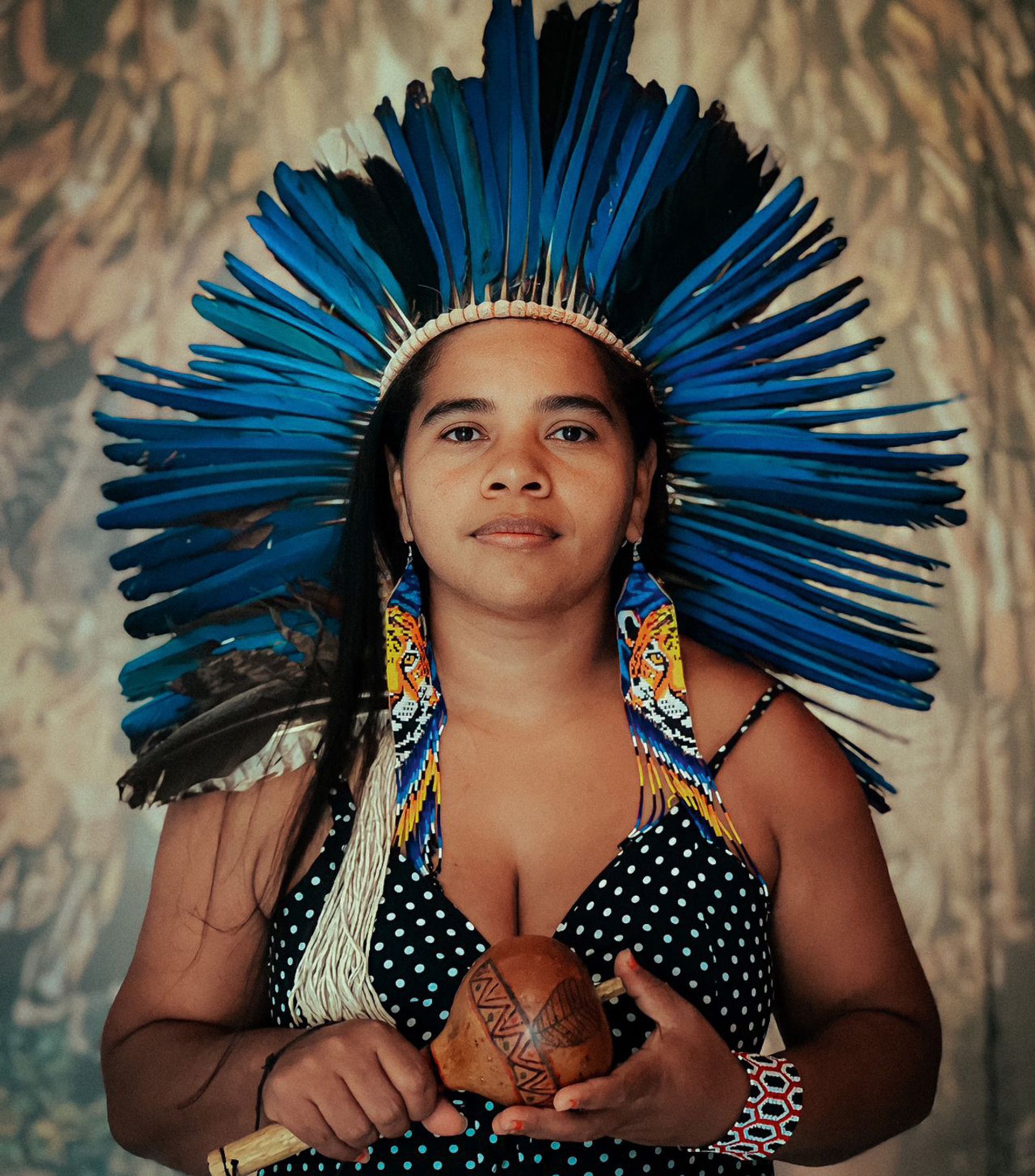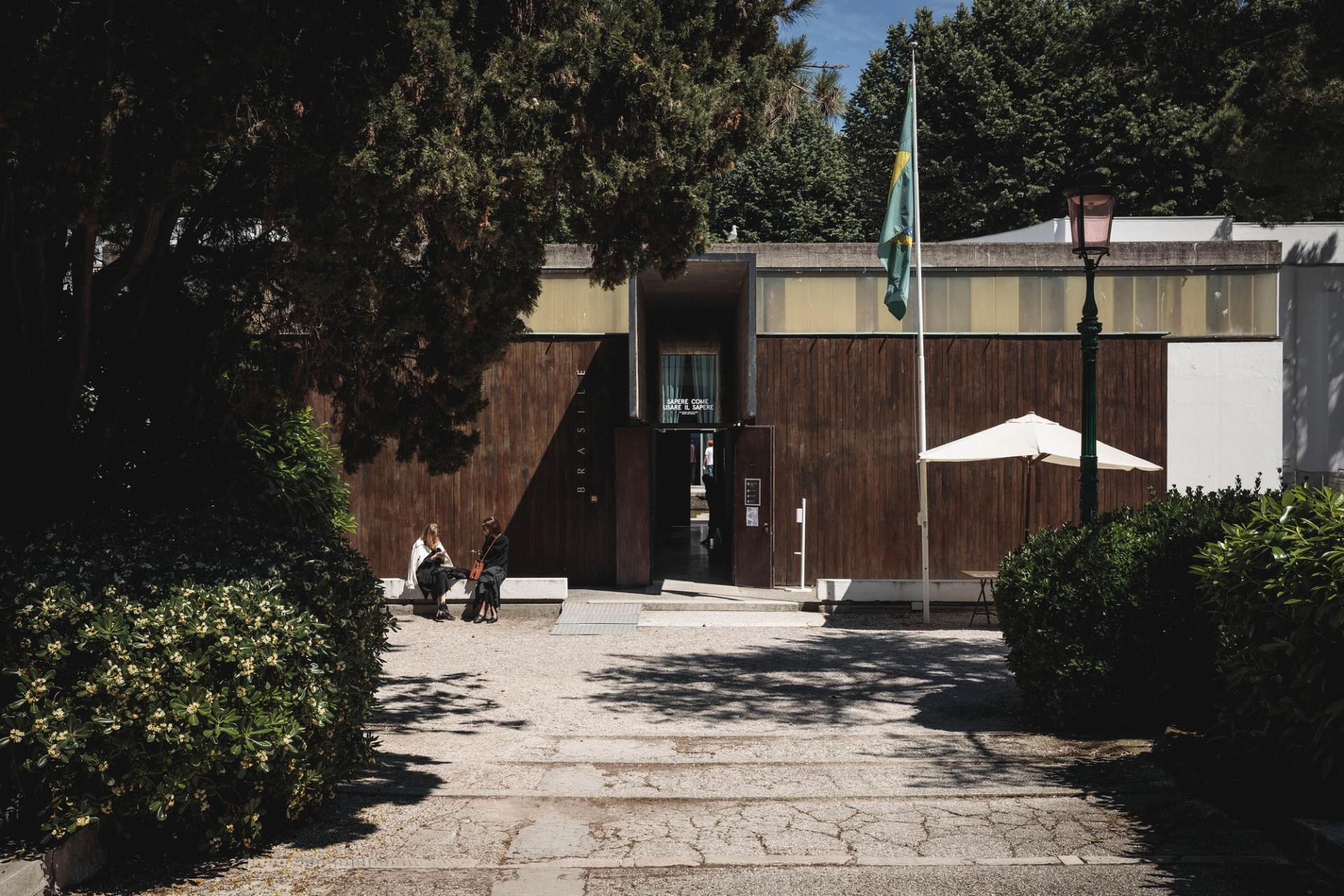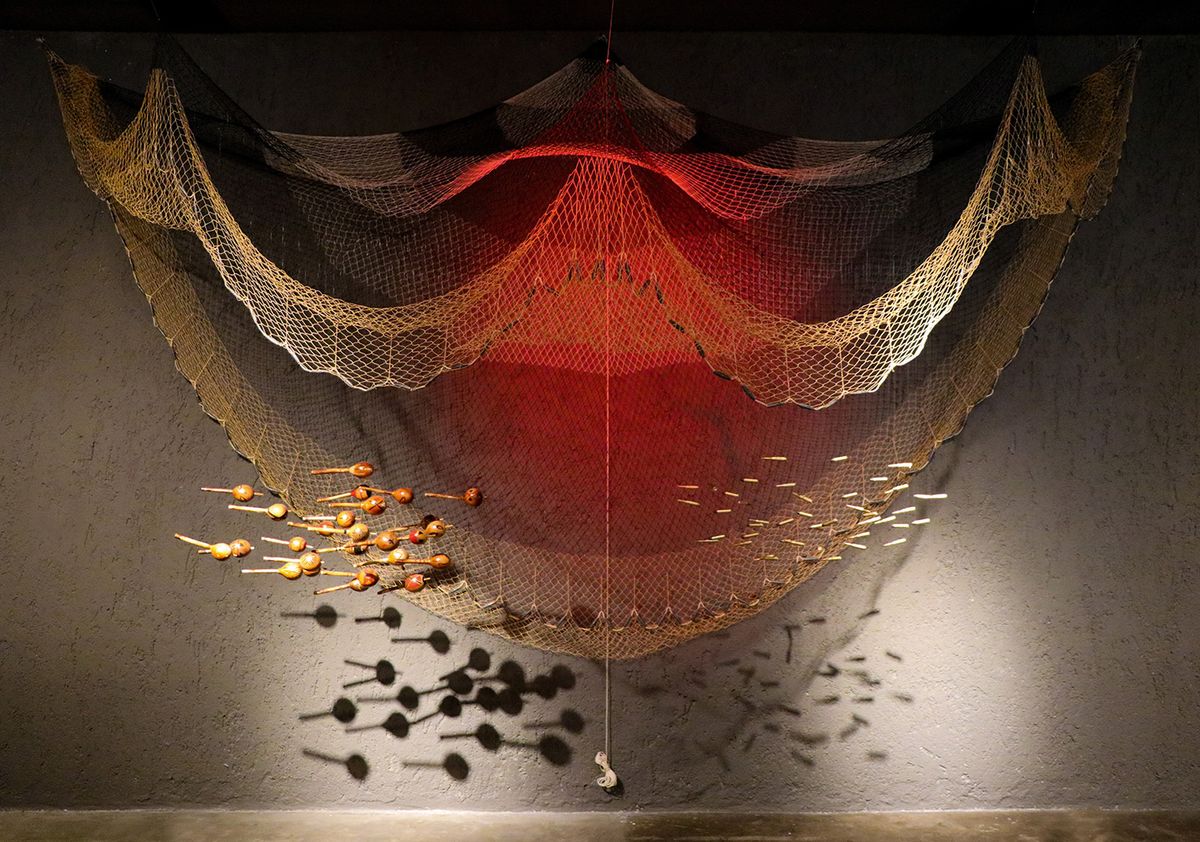Pavilions at the Venice Biennale are sectioned off by countries, embodying the idea of art as a cultural product of nation-states. In the colonial context, however, this model reinforces pre-existing inequality. In 2022 the Nordic countries (Sweden, Norway and Finland) organised a Sámi pavilion instead. This year a team of three curators, Arissana Pataxó, Denilson Baniwa and Gustavo Caboco Wapichana, takes over the Brazilian space, renamed the Hãhãwpuá pavilion. It is the first time that Indigenous artists or curators have occupied the pavilion, while Adriano Pedrosa is also the Biennale’s first Brazilian curator.

The artist Glicéria Tupinambá is from the Indigenous land of Olivença in the Brazilian state of Bahia Courtesy of the artist
The three Indigenous curators stress the strong connection of their vision to the Biennale’s title. “I think our concept has a lot to do with Pedrosa’s theme, Foreigners Everywhere. In the past, or at least in the past 400 years, Indigenous peoples have always been represented by others. Our main concern is to represent the present,” Wapichana says.
Pataxó says that Brazil’s Indigenous people are often called “invaders”, despite being owners of the land. “It makes us reflect on the place that we occupied in the five centuries of European invasion: on the margins of Brazilian society. Most communities live in situations that require them to always fight for basic rights such as food, health and education, due to the loss of traditional territories.”
Unfortunately what Indigenous people have in common is colonialist violence, whether it’s in Brazil, Canada or the USGustavo Caboco Wapichana, co-curator, Brazil pavilion
Hãhãwpuá means “the great land” in the Pataxó language. The ancestral territory is home to more than 300 Indigenous peoples existing long before the Portuguese colonisation. Reflecting on the challenge of capturing the enormous richness of native languages and cultures in a single show, Baniwa says, “Through the works of artists Glicéria Tupinambá, Olinda Tupinambá and Ziel Karapotó, we try to draw a panorama of everything that’s taking place in Brazil—the poetics, the practices, and the latest trends in what we call Indigenous contemporary art.”
Struggles for recognition and survival
Indigenous contemporary art has exploded in Brazil’s museums in the past few years, engendering a dialogue with art institutions and the public about the meaning of activism, art advocacy and social and cultural agency. It is particularly urgent, given that land grabs, environmental degradation and massacres of Indigenous leaders reached historic heights under the previous right-wing government led by Jair Bolsonaro.

A feather mantle by Glicéria Tupinambá of the type made by Indigenous people for centuries Courtesy of the artist
“In the last Biennale, in the Sámi pavilion, there was an encounter with Indigenous peoples that spoke to the fact that, unfortunately, what we have in common is this colonialist violence—it’s similar to all Indigenous peoples, in Canada, the US, etc,” Wapichana says.
Wapichana sums up the context of Brazil’s Indigenous people today by saying, “It’s as much about the strategies of survival and resistance as it’s about the process of regeneration.” The pavilion frames renewal as recognition and repatriation—a reminder that, for instance, the nation of Tupinambá, once thought to be extinct, was only officially recognised by the Brazilian government in 2001, and that many communities must still fight to have their spiritual and ancestral practices recognised by the state. Even when recognised, and legally demarcated, the lands are constantly subject to invasions by miners, land grabbers and ranchers.
Strategies for renewal
The title of the pavilion’s show, Ka’a Pûera: We are walking Birds, centres on capoeira, most commonly known as a form of an ancient martial art, but also a species of bird that symbolises renewal. “Many people see the capoeira territory as unused soil, but it’s where the forest regenerates,” Wapichana says, referring to the fact that Indigenous peoples have long cultivated the Amazon rainforest in sustainable ways.

The Brazilian pavilion, in the Giardini © Riccardo Tosetto/Fundação Bienal de São Paulo
The pavilion will also highlight other forms of knowledge circulating in Indigenous communities. For example, Glicéria Tupinambá’s video installation, Fold of Infinite Time, features seeds and nets as a reflection on how the past and the present flow into each other, and the artist runs workshops on making fishing nets and knitting. Olinda Tupinambá’s video installation Balance explores a spiritual entity, Kaapora, while reflecting her ongoing research on environmental degradation on Caramuru Indigenous land, combining first-hand testimony with official documents.Ziel Karapotó’s installation School of Fish comprises nets, maracas and ballistic projectiles to evoke the colonial past, but also to connect it to the current Indigenous fight against extractivism.
Another struggle the artists are involved in is the battle to reclaim the community’s ancestral mantles. Produced in the 16th-
17th centuries, the few that still exist are mostly held in foreign museums. In a recent case, the mantle Manto Tupinambá was returned by the National Museum of Denmark in Copenhagen, where it had been held since 1699, to Brazil’s National Museum in Rio de Janeiro. Glicéria Tupinambá, who creates mantles with her community, will present Okará Assojaba, which features the letters sent by the Tupinambá People of Serra do Padeiro to European and Brazilian museums, requesting loans of these sacred Indigenous artefacts.


